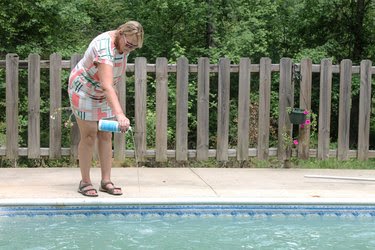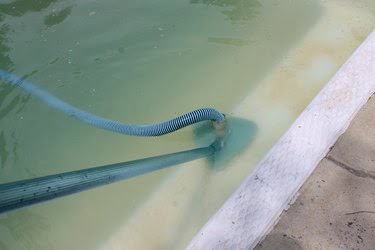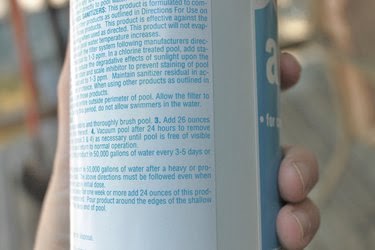Quck answer
Algaecide is a chemical compound that is used to control and prevent the growth of algae in various environments, such as swimming pools, ponds, and aquariums. To use algaecide effectively, follow these steps:
1. Test the water: Before adding algaecide, test the water to determine the pH and chlorine levels. Adjust them if necessary.
2. Choose the right algaecide: There are different types of algaecides available, so choose one that is suitable for your specific needs and follow the instructions on the label.
3. Add algaecide: Slowly pour the recommended amount of algaecide into the water, distributing it evenly. Avoid adding too much, as it may cause foaming or other issues.
4. Circulate the water: Turn on the pump and let it run for at least 24 hours to circulate the algaecide throughout the water.
5. Monitor and maintain: Regularly check the water for any signs of algae growth. If needed, repeat the algaecide treatment or adjust the dosage accordingly.
Remember to always read and follow the instructions provided by the manufacturer to ensure safe and effective use of algaecide.
Algae is a common issue in swimming pools, and pool owners often have to deal with it multiple times a year. Algae can enter the pool through various means, including wind, rain, and human contact. When combined with carbon dioxide, warm weather, and imbalanced pH levels, algae can thrive and lead to green water or slimy deposits in colors like yellow, green, pink, and black. Learning how to use algaecide can help you maintain a clean swimming pool without relying too heavily on chlorine.
Items You’ll Need
-
Algaecide
-
Rubber gloves
-
Eye protection
-
Pool vacuum
-
Pool brush
Using Algaecide: Step-by-Step
Step 1: Selecting the Right Algaecide

Start by choosing the appropriate algaecide for your pool based on the type of algae present. Some algaecide products are designed to treat multiple types of algae, while others are specific to certain types. For example, copper-based algaecide is effective against yellow algae, while silver algaecide works on green and black algae.
Step 2: Balancing the Pool’s pH
Before using algaecide, it’s important to restore proper pool chemistry. Check and adjust the pH levels if necessary. Aim for a free chlorine level of 3 ppm, as this can help control algae growth without the need for algaecide. If the issue persists, proceed with using the selected algaecide.
Step 3: Determining the Dosage

Calculate the appropriate amount of algaecide to add to your pool by following the instructions provided by the manufacturer. The dosage will depend on the number of gallons of water your pool can hold. Remember to put on rubber gloves and eye protection before handling the algaecide to protect your skin and eyes from potential burns.
Step 4: Applying the Algaecide

Pour the measured algaecide dose into the water, distributing it evenly across different areas of the pool. Make sure the pool pump is running during this process to help circulate the algaecide. Wait for approximately 30 minutes before allowing anyone to swim in the pool after applying the algaecide.
Step 5: Vacuuming the Pool

Wait for 24 hours after the initial algaecide application, and then vacuum the pool to remove any dead algae debris. If algae is still visible in the water, repeat the algaecide application as per the manufacturer’s instructions.
Step 6: Scrubbing the Pool

If the algae growth is heavy and pronounced, scrub the bottom and sides of the pool tile before applying the algaecide. In this case, wait at least 24 hours before swimming in the pool.
Step 7: Applying Maintenance Doses

Once you have successfully dealt with the initial algae growth, refer to the manufacturer’s instructions for applying maintenance doses. It is generally recommended to apply maintenance doses every three to five days, especially in hot temperatures or if the pool is being heavily used.
Tip
During the winter months, it may be necessary to use algaecide as part of routine pool care. Regularly monitor your pool, especially if it is covered, to check for algae growth and add algaecide as needed.
Caution
There is a possibility of experiencing certain undesirable effects when utilizing a metal or mineral-based algaecide, such as copper or silver. It is important to note that certain copper formulations have the potential to alter the color of swimmers’ hair, whereas silver may undergo a reaction with sunlight, resulting in pool staining. To mitigate these negative reactions, it may be necessary to include an additional component, such as a sequestering agent.

